
Hiking Around Las Vegas, Other Areas

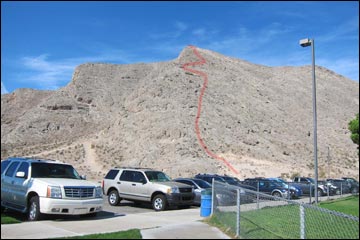 East Buttress (view W from trailhead) |
Overview Lone Mountain is a steep, isolated, rocky butte in NW Las Vegas just inside the Interstate-215 Beltway. The summit stands some 600 feet above the surrounding homes, giving great views of the city and the surrounding mountains. There are several routes up Lone Mountain. The East Buttress Route is short and very steep (0.44 miles) route, with lots of Class-3 and a bit of Class-4 scrambling, and takes only about 40 minutes if you stop to enjoy the scenery. The North Ridge and South Ridge routes also provide challenging routes. Lone Mountain is good place for a quick get-away or after-work hike; and as one guy said, it beats an afternoon workout on a treadmill. Link to route map. |
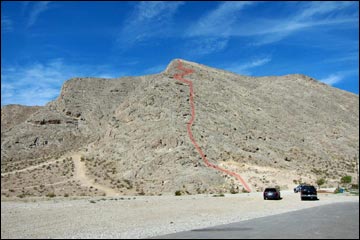 |
Watch Out Other than the standard warnings about hiking in the desert, ...this is a steep, Class-4 route with plenty of opportunity to stumble off the mountain and roll all the way to the bottom. The west face of the summit is nearly vertical, so don't fall off that side either. There is a bit of loose gravel, but most of the footing is secure. While hiking, please respect the land and the other people out there, and try to Leave No Trace of your passage. Although this hike is short, be sure to bring what you need of the 10 Essentials. |
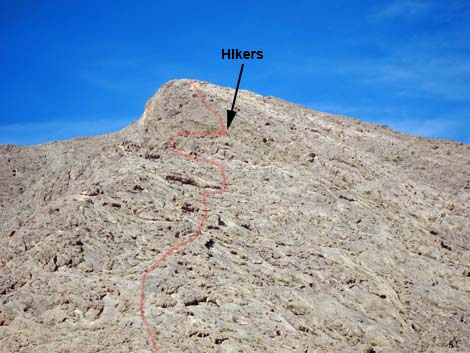 |
Getting to the Trailhead Lone Mountain is located in the northwest part of urban Las Vegas, just inside the Western Beltway (Highway I-215) between Lone Mountain and Alexander roads. From town, drive north on Highway 95 or Highway 215 to the northwest part of town. Continue to the Lone Mountain Discovery Park Trailhead, which is located on the east side of the mountain. |
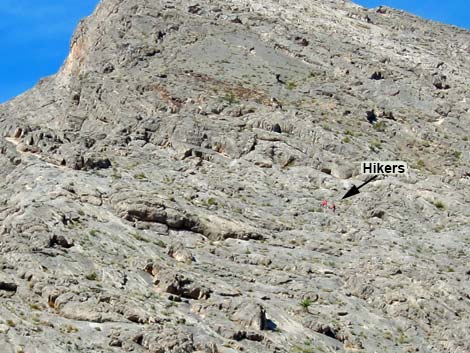 |
The Hike Directly west of the trailhead, the East Buttress (Table 1, Waypoint 40) rises steeply towards the summit. Starting on a dirt slope just north of the ridgeline, the route cuts left and climbs directly onto the limestone ridgeline. Following close to the spine of the ridge, but generally staying on the north side, the route continues steeply, passing a bit of narrow ridgeline (Wpt. 41) and continuing to a campsite-sized ledge (Wpt. 42). Many variations of the route are possible, but there is a bit of Class-4 on the ridgeline below this ledge. |
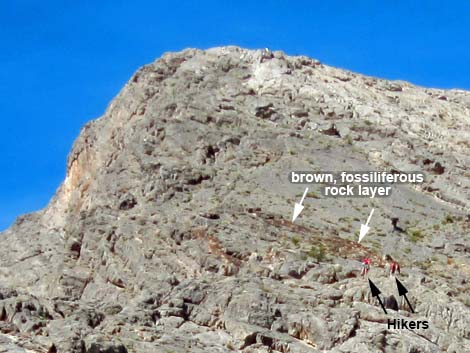 |
Above the large ledge, the route again drifts onto the north-facing slope where there is a layer of dark, fossiliferous rock (mostly fossilized muck, but with a few horn corals, sponges, and perhaps casts of worm burrows). Just above the dark layer, there are some nice coral fossils in the light-gray limestone. Climbing back onto the ridgeline, the route passes a narrow ledge (Wpt. 43) with nice views. Staying on the ridgeline, the route passes a few fossil corals underfoot, and before long arrives at the top of the steep climbing (Wpt. 44) near a memorial marker. Here, the hard part is over, and climbers can stroll on up onto the edge of the summit plateau (Wpt. 36) and the summit (Wpt. 11). Returning from the summit by the Regular Route would be the safest option. |
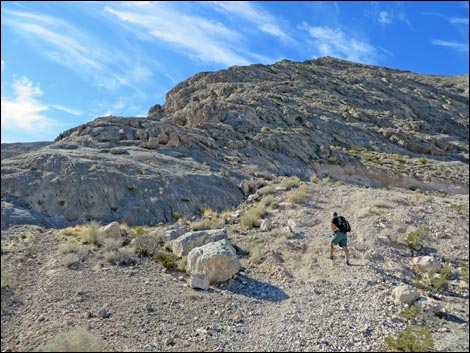 Hikers starting up dirt slopes at toe of ridge (view W)` |
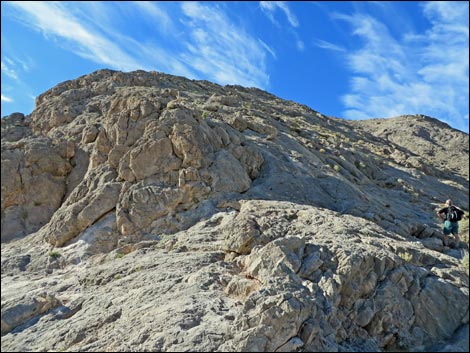 Hiker staying on north-facing slope to avoid cliffs (view W) |
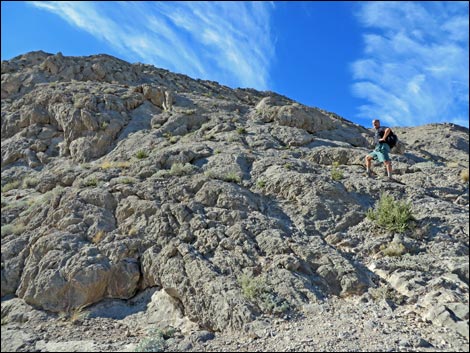 Broad section of ridgeline (view W) |
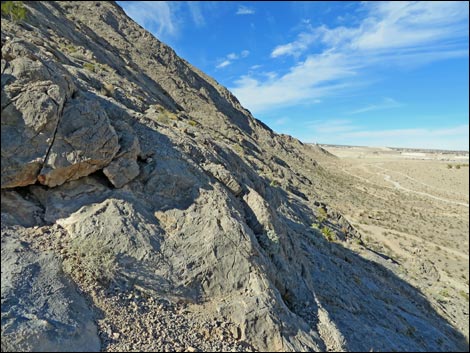 Steep east face of Lone Mountain (view N from ridgeline) |
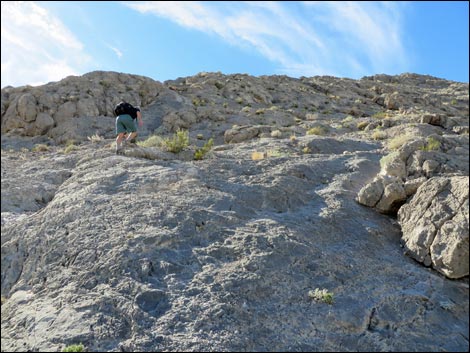 |
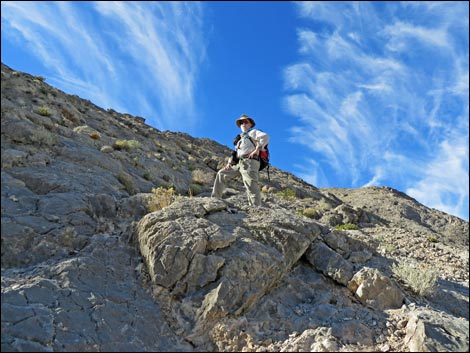 |
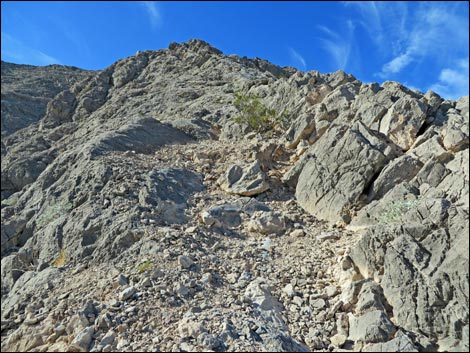 |
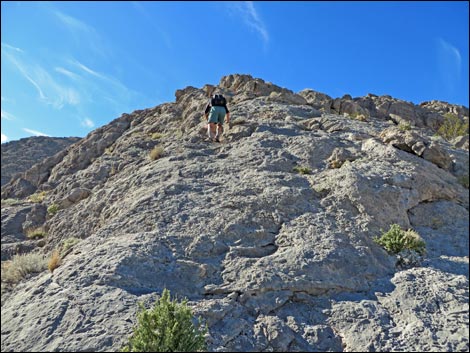 |
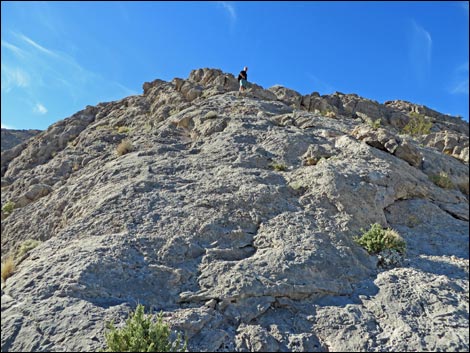 Broad ridgeline (view W) |
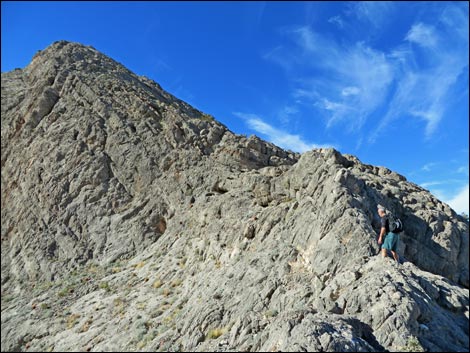 Narrow ridgeline (view W) |
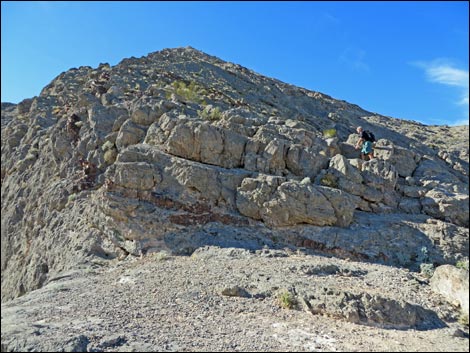 Campsite-sized ledge (view W) |
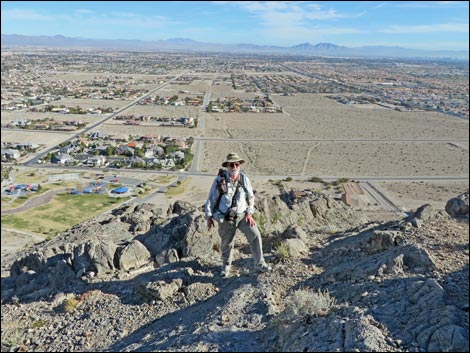 Hiker on narrow ledge (view E) |
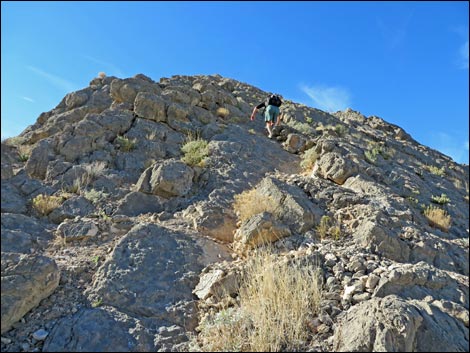 Steep slope (view W) |
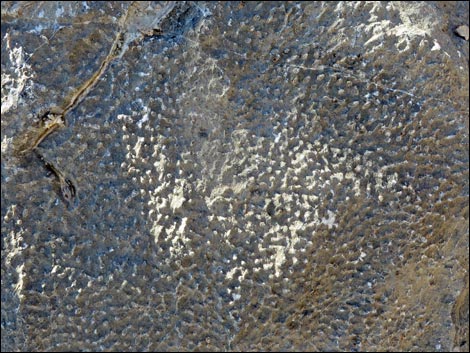 Fossil coral in limestone |
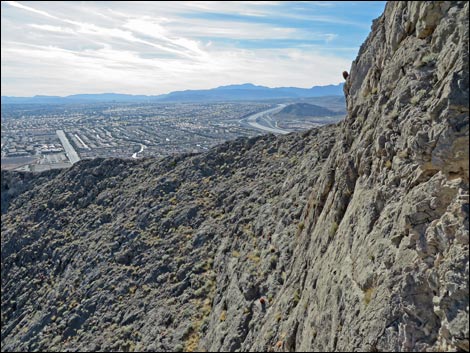 South Ridge of Lone Mountain (view S) |
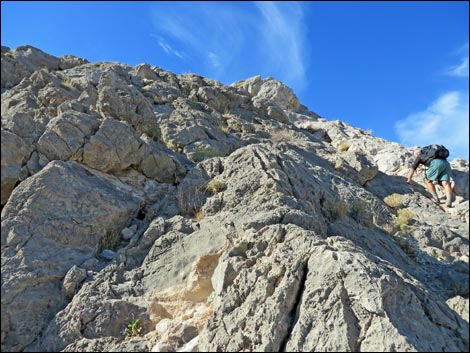 Last of the steep ridgeline (view W) |
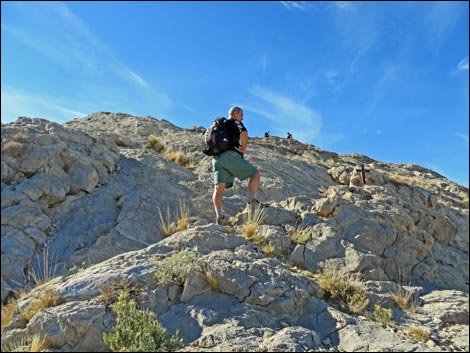 Hiker at edge of summit area (end of steep climbing; view W) |
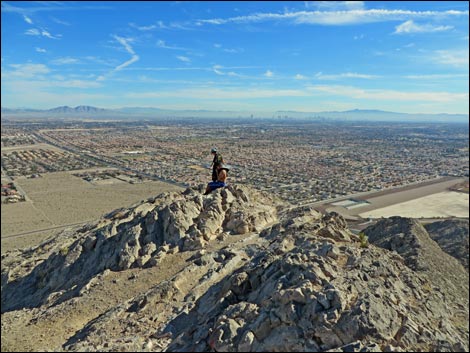 Hikers in summit area (view SE) |
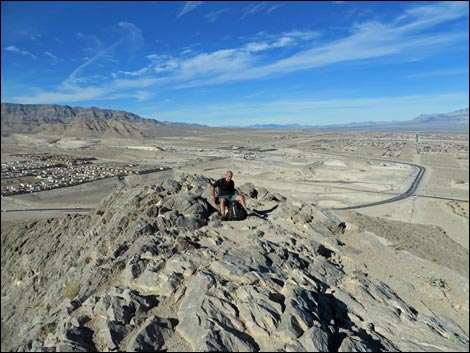 Hiker in summit area (view N) |
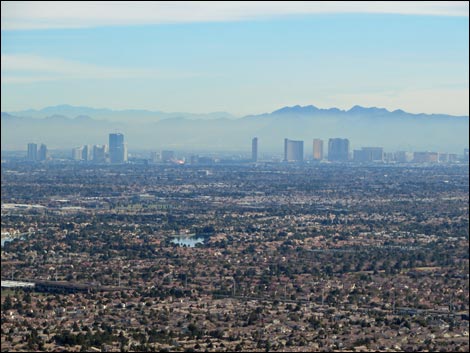 Las Vegas (view SE) |
Table 1. Highway Coordinates Based on GPS Data (NAD27; UTM Zone 11S). Download Highway GPS Waypoints (*.gpx) file.
| Wpt. | Location | UTM Easting | UTM Northing | Elevation (ft) | Point-to-Point Distance (mi) | Cumulative Distance (mi) | Verified |
|---|---|---|---|---|---|---|---|
| 40 | Base of East Ridge | 651888 | 4011598 | 2,591 | 0.00 | 0.00 | GPS |
| 41 | Ridgeline | 651726 | 4011512 | 2,915 | 0.19 | 0.19 | GPS |
| 42 | Large Ledge | 651661 | 4011517 | 3,019 | 0.07 | 0.26 | GPS |
| 43 | Narrow Ledge | 651615 | 4011493 | 3,112 | 0.06 | 0.32 | GPS |
| 44 | Top of the Steep | 651528 | 4011467 | 3,298 | 0.10 | 0.42 | GPS |
| 36 | Edge of Summit Plateau | 651503 | 4011455 | 3,340 | 0.02 | 0.44 | GPS |
| 11 | Summit | 651486 | 4011469 | 3,301 | 0.01 | 0.45 | GPS |
Happy Hiking! All distances, elevations, and other facts are approximate.
![]() ; Last updated 240330
; Last updated 240330
| Lone Mountain | Hiking Around Las Vegas | Glossary | Copyright, Conditions, Disclaimer | Home |